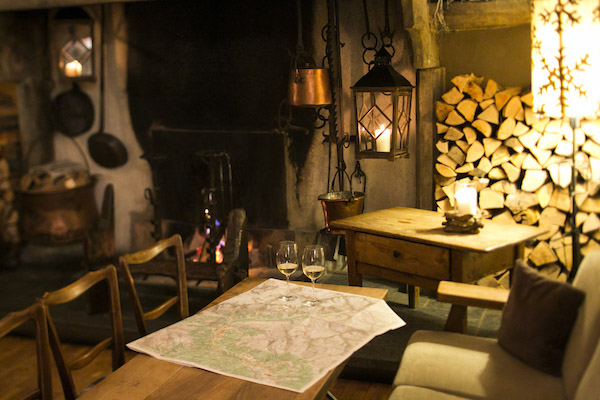
20 Aug Where to find the best Alpine weather for your ski safari
Where do find the best Alpine weather for your ski safari?
A few centuries ago the locals feared the mountain and its Alpine weather. They believed that demons and monsters hid there, causing great quantities of snow to fall and making menacing sounds at night. This was not such a bad thing as it kept them safe. Today, superstition is no longer part of how we assess the mountain conditions. Alpine weather patterns, sun, changes in temperature, wind and rains cause the snow and skiing conditions to evolve everyday.
Does Pascal smell snow coming?
No, of course not. Then again I can’t help wondering if he might have some sixth sense for Alpine weather. After a quiet coffee together before everyone wakes, he informs me that we will not be taking the helicopter as planned this morning. But not to worry, he has another spot in mind. A Ski safari in Europe is a little like that. You plan a route and then the weather in the Alps causes things to change. What you do get each day is incredible skiing, even though the names of the places may be different from the scheduled itinerary.
You may be in Switzerland today, but perhaps Italy tomorrow, and then why not France.
In this region of the Alps, three countries border each other, each with their own unique Alpine weather. We ski, in the country where the conditions are the best on the day. You can find yourself speaking different languages and eating different regional specialties all in the same day during our luxury ski trips in the Alps. This makes for much more than just a ski trip.
The weather needs to be on your side but it helps to have heli-drops with a choice of routes from each landing spot including more than 2,000 metres of vertical descent. And don’t be fooled into thinking that you will only ski powder. Runs are long (three hour descents are not uncommon), which means that the snow conditions are constantly changing. Because of the Alpine weather and long vertical descents, the skiing on a ski safari is varied; from glaciers to forests, untouched summits to isolated descents, stumbling onto charming, snow-clad cobblestone streets in ancient mountain villages to cap off the day.
The weather in the Alps produces microclimates.
The very high mountains block the Alpine weather systems on one side of the range. It can be snowing on one side and clear skies on the other. The distance, via a tunnel through the mountain, ( 20 minutes drive in a vehicle) may not be far but the change in weather can be dramatic. This is why you might unexpectedly find yourself crossing country borders to knock on the door of an inhabited monastery, only accessible by skis, on the border of Switzerland and Italy. Our team of professional ski guides, snow doctors and heli pilots craft the perfect combination of lift access off piste skiing and heli drops into powdery backcountry based on the Alpine weather.
We ask everyone who joins us on a SwisSkiSafari to respect the the moods of mountain with us. We ask you to use your senses, participate and let yourself be seduced by the Alpine weather.
A ski safari is a wonderful way to take advantage of Alpine weather and if you are looking for a challenging trip read our blog post on Ski touring the Haute Route
Warm regards from the mountains,
Danielle


